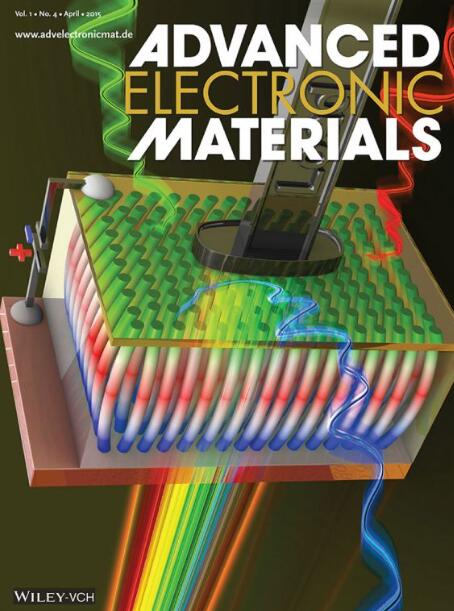Multi-Walled Carbon Nanotubes Suspensions as Liquid Conductors: Electrical and Mechanical Network Interplay
IF 5.3
2区 材料科学
Q2 MATERIALS SCIENCE, MULTIDISCIPLINARY
引用次数: 0
Abstract
Soft-adaptive electronics require both sensor and conductor materials. The key parameter for these materials is their mechanoelectrical properties. Liquid metals and solid conductive composites have been exploited in this application field, but both are limited by either their chemical stability or limited flexibility, respectively. Electrofluids are a novel approach toward soft electronic components. They are concentrated colloidal suspensions of conductive particles, in which dynamic contacts retain electrical conductivity under deformation, filling the gap between liquid metals and solid composites. Here, the mechanical and electrical network interplay of electrofluids is studied based on multi-walled carbon nanotubes (MWCNTs) in glycerol. These networks arise at different filler concentrations, showing a different response to external deformations. It is found that electrical conductivity occurs without the presence of a rigid mechanical network, which allows MWCNT suspensions to be electrically conductive even under flow conditions. By performing rheoelectrical measurements, the study observed how the mechanical and electrical networks evolve with the applied deformation. The study demonstrates the applicability of electrofluids with tailored mechanoelectrical properties as soft electrical connectors.

作为液体导体的多壁碳纳米管悬浮液:电气和机械网络的相互作用
软自适应电子器件需要传感器和导体材料。这些材料的关键参数是其机械电气性能。液态金属和固态导电复合材料已在这一应用领域得到开发,但两者都分别受到化学稳定性或柔韧性的限制。电流体是实现软电子元件的一种新方法。它们是导电颗粒的浓缩胶体悬浮液,其中的动态触点在变形时仍能保持导电性,填补了液态金属和固态复合材料之间的空白。本文以甘油中的多壁碳纳米管(MWCNTs)为基础,研究了电流体的机械和电气网络相互作用。这些网络产生于不同的填料浓度,对外部变形表现出不同的反应。研究发现,在不存在刚性机械网络的情况下也能导电,这使得 MWCNT 悬浮液即使在流动条件下也能导电。通过流变电学测量,该研究观察了机械和电气网络如何随外加变形而演变。该研究证明了具有定制机械电特性的电流体作为软电连接器的适用性。
本文章由计算机程序翻译,如有差异,请以英文原文为准。
求助全文
约1分钟内获得全文
求助全文
来源期刊

Advanced Electronic Materials
NANOSCIENCE & NANOTECHNOLOGYMATERIALS SCIE-MATERIALS SCIENCE, MULTIDISCIPLINARY
CiteScore
11.00
自引率
3.20%
发文量
433
期刊介绍:
Advanced Electronic Materials is an interdisciplinary forum for peer-reviewed, high-quality, high-impact research in the fields of materials science, physics, and engineering of electronic and magnetic materials. It includes research on physics and physical properties of electronic and magnetic materials, spintronics, electronics, device physics and engineering, micro- and nano-electromechanical systems, and organic electronics, in addition to fundamental research.
 求助内容:
求助内容: 应助结果提醒方式:
应助结果提醒方式:


